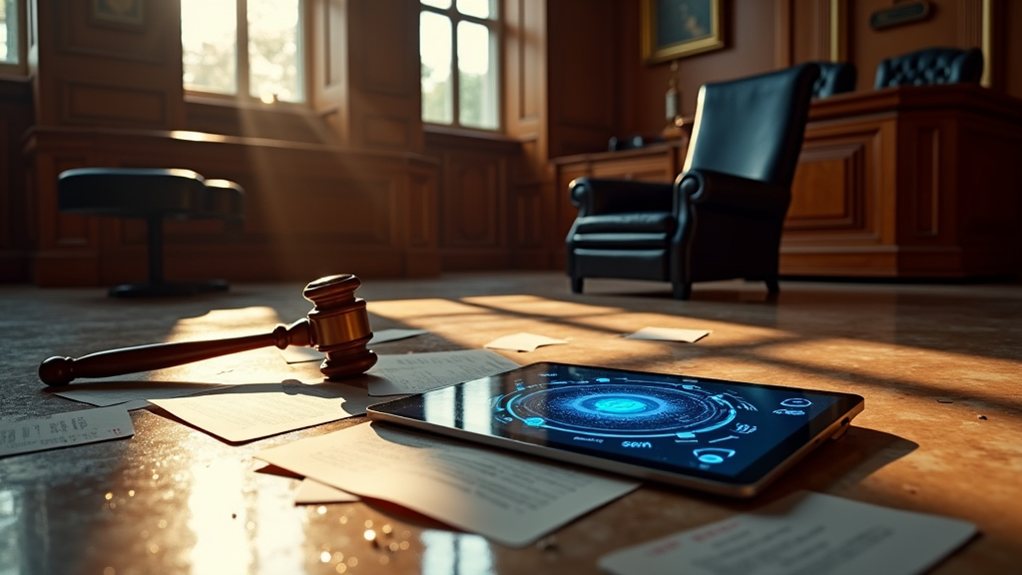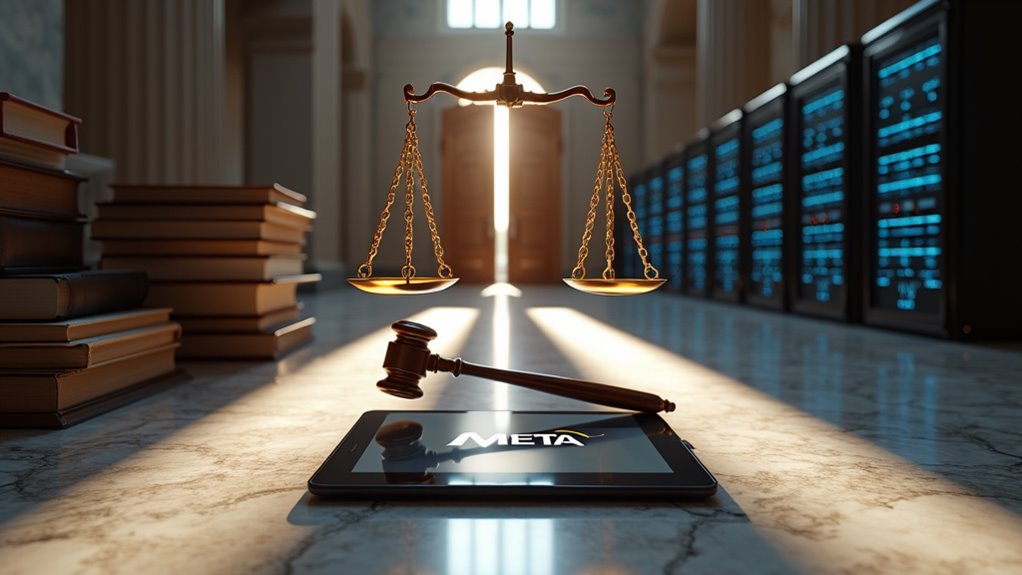AI has officially crashed the legal party, with 85% of lawyers now using generative AI tools daily or weekly to draft documents, review contracts, and handle client correspondence. This tech revolution is freeing up 4 hours per week per attorney while generating an estimated $100,000 in new billable time annually. The catch? Firms are scrambling to develop “AI fluency” as traditional hourly billing models face extinction, and those who don’t adapt risk becoming as obsolete as fax machines in a digital world—stick around to see what’s coming next.
While lawyers have historically been about as quick to embrace new technology as glaciers are to sprint, artificial intelligence is rewriting that narrative faster than you can say “billable hours.” The legal profession—long dominated by dusty law libraries, endless paperwork, and the kind of resistance to change that would make a stubborn mule proud—is experiencing something of a digital revolution. 85% of lawyers now use generative AI daily or weekly, transforming everything from document drafting to client correspondence with the efficiency of a well-oiled machine.
The numbers tell a compelling story. AI is predicted to free up 4 hours per week per legal professional, which translates to roughly $100,000 in new billable time annually. That’s not pocket change, even by lawyer standards. Currently, 54% of legal professionals use AI for drafting correspondence, while 47% deploy it for document review—those mind-numbing tasks that used to eat up entire afternoons. Much like in customer service, AI resolves legal queries and document reviews 44% faster than traditional manual methods.
But here’s where it gets interesting: individual lawyers are adopting AI faster than their firms can keep up. While 37% of firms not using AI plan to start (because nobody wants to be the Blockbuster of law), adoption varies wildly by practice area. Civil litigation leads at 27%, while immigration law lags at 17%—apparently, robots haven’t figured out visa applications yet. The primary roadblocks include budgeting constraints, integration challenges, and configuration complexities that prevent firms from keeping pace with their tech-savvy attorneys.
The workflow transformation is dramatic. Legal professionals report enhanced job satisfaction as they shift from tedious document review to strategic planning and client relationships. 72% see AI as a “force for good” in the profession, which is remarkable considering lawyers typically view change with the enthusiasm of cats approaching water. However, 43% of legal professionals predict a decline in hourly rate billing models in the next five years as AI transforms traditional service delivery.
This efficiency revolution is reshaping business models faster than you can update a retainer agreement. The traditional hourly billing structure—beloved by partners everywhere—faces pressure as AI-enabled firms undercut competitors’ prices. The projection? 266 million hours of productivity gains annually for U.S. lawyers.
But there’s a catch: this transformation demands “AI fluency” from legal professionals. Firms need thorough training programs and upskilling initiatives to navigate this brave new world responsibly. The message is clear—adapt or risk becoming the legal equivalent of a fax machine in an email world.







